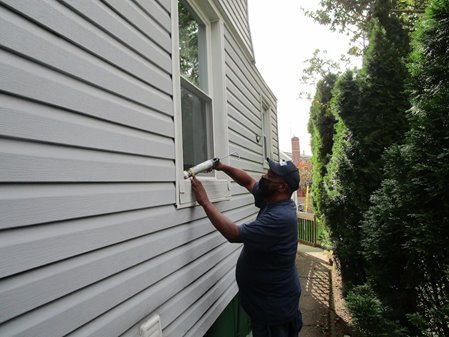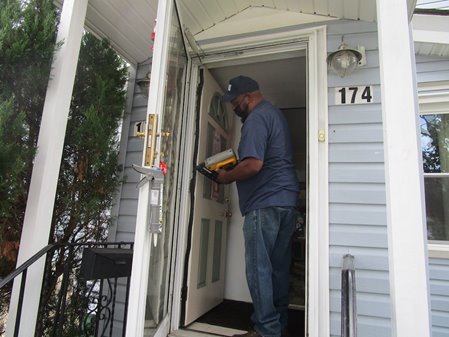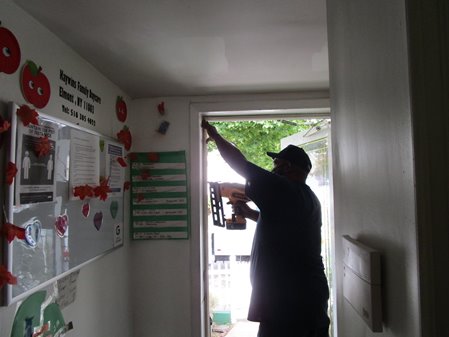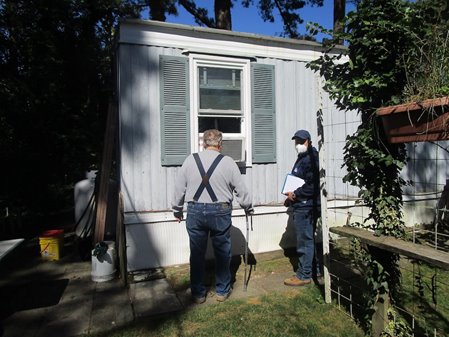Energy awareness, weatherization and home repairs can make a difference in a resident's power bill. William Achnitz, vice president of home improvement and optimization for Community Development Corporation of Long Island (CDCLI), has a list of improvements his organization makes that have a significant impact. "Insulation, air sealing, window replacement, caulking, weather stripping, door sweeps, fans to increase ventilation, heating system repairs," he begins. The list also includes safety precautions, like installing carbon monoxide detectors.
 This month is Energy Awareness Month, a time to raise awareness about energy management and building optimization and about energy technologies. Held each October as temperatures drop, it's a good time to focus on the season ahead. But staff at the CDCLI works on weatherization year-round. The organization, one of at least 29 NeighborWorks network organizations that receive funding through the Department of Energy's Weatherization Fund, serves an average of 450 households a year, primarily individuals 60 and over. "We check for carbon monoxide, too, and radon," adds Kevin Daley, multifamily weatherization manager.
This month is Energy Awareness Month, a time to raise awareness about energy management and building optimization and about energy technologies. Held each October as temperatures drop, it's a good time to focus on the season ahead. But staff at the CDCLI works on weatherization year-round. The organization, one of at least 29 NeighborWorks network organizations that receive funding through the Department of Energy's Weatherization Fund, serves an average of 450 households a year, primarily individuals 60 and over. "We check for carbon monoxide, too, and radon," adds Kevin Daley, multifamily weatherization manager.
To make sure residents are aware of its weatherization program – and of energy-related fixes individuals can make themselves – CDCLI gets the word out through community partners and at events around Long Island. "We do a lot of outreach efforts," says Achnitz. "And we rely on word of mouth." Normally, if someone sees an agency van at a co-op or a mobile home park, neighbors talk to neighbors and word travels quickly.
Technology has changed over the decades the agency has operated its weatherization program, says Daley. There are more tools for testing and more ways to keep track of data.
That means results are quicker and more accurate, adds Mike DeMarcantonio, assistant vice president. He shares that some home improvements may seem small, but they have a large impact. Take a door sweep, for example. "Major drafts come through a door," DeMarcantonio says. "The bigger the gap the more the air flow. There can be a lot of savings in a single door sweep – a ton of savings."
According to the state of New York, weatherization can bring about an average savings of $400 a year. Achnitz believes it's higher on Long Island, which has higher electricity costs than other parts of the state. Adds DeMarcantonio, "I wouldn't be surprised if the savings is triple that, given all we do."
 Achnitz says the goal of the weatherization program is to decrease the energy burden of households, so families are paying no more than 6% of their income on energy or heating. For lower-income families, often as much as 20% of their income goes to heating their home, so any savings can have an outsized impact.
Achnitz says the goal of the weatherization program is to decrease the energy burden of households, so families are paying no more than 6% of their income on energy or heating. For lower-income families, often as much as 20% of their income goes to heating their home, so any savings can have an outsized impact.COVID-19 has impacted the weatherization line of work for several reasons – first because, especially pre-vaccine, some homeowners haven't wanted to have people in their homes to do the work. Secondly, there have been material shortages. "If a window factory shuts down for a few weeks with COVID, that's going to have a ripple effect in our supply chain," Achnitz says. "We've done are best to deal with it."
Recommendations from CDCLI on home improvements include:
- Changing incandescent bulbs to LED lighting.
- Using Energy Star appliances
- Air sealing and insulation
- Cleaning and tuning your heating system
CDCLI is making a difference in the community, one house at a time. "We get handwritten cards in the mail a lot," Achnitz says. People write to say, "our heating bill has gone down" or "I feel safer at night."
 The nonprofit helps individual homeowners as well as nonprofits like Mercy Haven, a housing provider whose relationship with the CDC goes back 10 years. "Their weatherization program has improved over 15 of our properties, with more projects pending, and has proved an excellent means of creating energy savings over time," says Ciara Jensen, director of development.
The nonprofit helps individual homeowners as well as nonprofits like Mercy Haven, a housing provider whose relationship with the CDC goes back 10 years. "Their weatherization program has improved over 15 of our properties, with more projects pending, and has proved an excellent means of creating energy savings over time," says Ciara Jensen, director of development.Reducing energy consumption and their carbon footprint is a high priority for the organization.
"Having the CDC as a partner helps us meet this vital priority, while also helping us tend to our highest responsibility: the health and safety of the over 300 people we house and serve on Long Island," says Jensen.
A home is the largest investment most people ever make, explains Clare Rosenberger, NeighborWorks America's director of real estate programs. "We want them to be able to take care of it, to help stabilize the person in the home so they're not up against huge energy bills. When we think about weatherization, we're thinking about the strategies you can use to make your home more efficient and more comfortable. We want you to be comfortable in the home you love and have it be safe for you and your children."

This time of year, Rosenberger shares simple things homeowners can do to reduce their energy bills. "In addition to consulting experts, there are lots of things you can do yourself," she says. "It doesn't have to be about new windows, it can be about putting up heavier curtains or caulking. It's about programming your thermostat, making sure your vents aren't blocked by furniture. A lot of it is about making your house work better for you."
For more information, listen to Rosenberger's recent appearance on Fox5.

